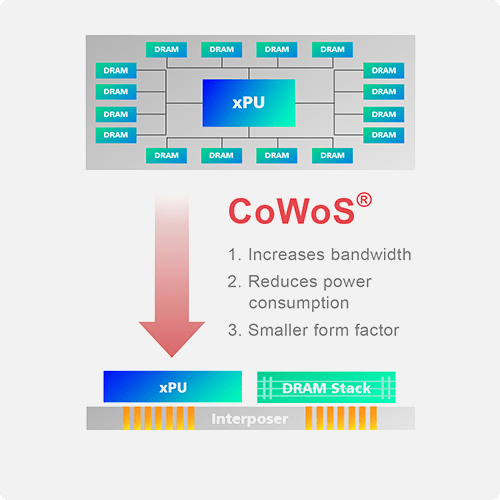Last month, TSMC introduced the world’s largest chip-on-wafer-on-substrate (CoWoS) interposer. Given the COVID-19 situation in the middle of the world, one would expect production to cease, but at TSMC the opposite is true. According to the anonymous source in DigiTimes, demand for CoWoS has skyrocketed.
TSMC CoWoS, Nvidia and AMD are trying to take over the revolutionary interposer
Big names like Nvidia, AMD, HiSilicon, Xilinx and Broadcom are knocking on TSMC’s door to get a CoWoS package for use in the AI and ASIC accelerators from the last two weeks. This has prompted TSMC to increase production in its factories to full capacity.
CoWoS is a technology that enables the placement of logic chips and DRAMs in silicon interleaved. It is a 2.5D/3D process that can reduce processor size and achieve much higher I/O bandwidth.
The CoWoS packet produced was 1700 mm2 in size and allowed a massive increase in bandwidth performance, e.g. 2.7 TBps, which is 2.7 times the performance increase over the technology provided by TSMC in 2016. It enables up to 6 HBM cells with up to 96 GB of memory, which is a quantum leap compared to all other cards on the market. It is not only ideal for GPU solutions, but also for 5G networks, low power data centers and more. For more information, please follow this link.
The products that currently feature this technology are the Nvidia V100 and the AMD Radeon VII, which has more memory on the PCB compared to other boards due to the HBM in the same silicon interposer as the GPU. For this reason, the memory is called HBM2 memory. The memory is much closer to the GPU, allowing for much higher bandwidth compared to GDDR6 cards where the memory is further away from the GPU on the PCB.
It’s exciting to see where this technology is heading and how it will change the future of graphics cards with more memory capacity, higher memory bandwidth, smaller PCBs and better power efficiency.
